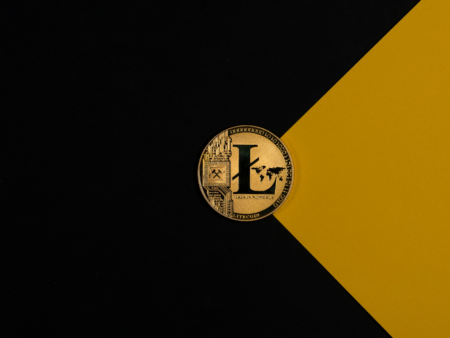What is Cryptocurrency Staking?
A cryptocurrency stake is a way to earn rewards or interest by locking up your existing cryptocurrency portfolio for a few months. If you hold your money with the bank, the bank will pay you interest for keeping it with them, just as if you had money in a regular savings account. The rewards here are essential for holding a particular cryptocurrency for a set period and not being able to withdraw it. In some staking schemes, you can unbind your staked crypto reasonably quickly, but the consequences will be significant. Taking a deeper look at staking in cryptocurrencies and its reasons, we will review the different types of crypto staking.
Cryptocurrencies and investing have risks and rewards, just like everything else. In this article, we’ll examine why more and more crypto investors are moving from HODLing cryptocurrency to staking as an alternative.
The Technology Behind Staking
Cryptocurrencies are staked in staking pools, similar to savings accounts. It is possible to make money with cryptocurrency by putting it to work on the blockchain.
A proof of stake mechanism ensures that all transactions in cryptocurrencies that allow staking are fully secured and verified. A centralized body, such as a bank, cannot be involved in cryptocurrency transactions, making them safe. The staked cryptocurrency becomes a part of the process when it is put to work.
The proof of stake method avoids using a resource-intensive minor-reliant approach that relies on investors to validate the cryptocurrency. If you stake even a small amount of cryptocurrency, you are part of the blockchain and the future.
With staking, the big players are the validators and get more rewards. It is recommended to stake your cryptocurrency through a reliable validator rather than an individual staker since validators require a hefty initial investment. When problems occur, stakers prioritize validators by the amount of capital they have invested, something we will discuss later, as slashing events can happen.
Can you Make Money from Staking?
The profitability of crypto projects is a major concern for investors. Averaging between 5% and 20%, crypto staking rewards are received within a short amount of time. The higher the percentage, the faster you are likely to receive your rewards. Some cryptocurrencies, however, have been consistently granting 10-12% returns on staked coins over the past couple of years, making them on par with or even outperforming indexes such as the S&P 500.
A lot of stake opportunities are advertised as unheard of returns, like 400% APY, which are unrealistic and should probably be avoided.
Different Types of Crypto Staking Rewards
APR versus APY
You’ll either see an APR percentage or APY if you choose to start staking. The annual percentage rate, or APR, is the raw interest rate, whereas the annual percentage yield (APY) accounts for compounding.
An increase in APR and APY usually indicates a greater compounding rate. Cryptocurrencies, for example, are continuously compounded. The APY can be much higher than the APR if a cryptocurrency is constantly compounding and reinvesting interest.
Stakes come with specific rules that must be followed. It is possible to compound cryptocurrency stakes instantly into the same pool. Still, some only allow you to withdraw the interest from one stake to another.
Rewards Payout Rate
You will receive and have access to your interest at a different rate for each cryptocurrency stake. The more frequent the payouts are, the better for most investors since the payouts can be put to work in another stake or traded for another cryptocurrency. For example, Ethereum staking usually pays out daily rewards, whereas other platforms may pay out weekly or bi-weekly rewards.
What are the requirements to Stake My Crypto?
Whenever you decide to stake a cryptocurrency, you need to consider two key factors:
- Minimum balance required
There will be a minimum initial stake required for everyone’s stackable cryptocurrency. Staking options can be as simple as a single CRO staked or a 0.1 ALGO staked.
There are often different rules for how and when you can remove your liquidity from cryptocurrencies with very small requirements.
- Lock-Up Period
The longer the lockup period, the greater your reward, as they are usually proportional to the high APY. Lockups can last from a few days to several months or even years before your liquidity can be removed.
Your crypto may be locked up for a certain amount of time at the beginning of your stake, or it may not, but you will have to wait until after de-staking to access your crypto. De-staking does not result in any interest being paid during the period when you are not staking.
Can Every Cryptocurrency be Staked?
With proof-of-stake becoming more mainstream, we’re seeing more stackable cryptocurrencies. Staking is not possible with all cryptocurrencies; on the contrary, it is not possible with some cryptos.
Is There Any Risk to Cryptocurrency Staking?
A larger cryptocurrency evokes a greater sense of stakes, as previously discussed. All investors should be aware of the inherent risks associated with staking.
You should feel bullish about the long-term potential of your cryptocurrency if you choose to stake it, especially for an extended period of time. Depreciating assets can still earn interest, but they will still lose value.
To fully reap the rewards of staking from a stable asset, staking veterans choose stablecoins. In contrast, many coins can be staked using a decentralized network, such as crypto.com’s DeFi wallet, rather than centralized exchanges, which often lack liquidity.
Slashing Events
It is true that slashing events occur when a validator’s stake is removed as punishment for malicious behavior. Validators should engage in slashing events as a necessary evil, as they provide an excellent way to anonymously punish bad behavior in a decentralized world.
Staked cryptocurrency with a validator whose stake has been slashed will also result in your stake being slashed. To take success, you need to choose the right validator, like seeing which validator has the most skin in the game.
A more detailed article on slashing will explore why they occur and what behavior they punish. Some PoS protocols don’t use slashing to punish bad behavior. Still, those that don’t often have slashing events are deemed more secure.
Staking as a Philosophy
Risk-averse and risk-tolerant investment approaches are common in any investment class. The risk-takers invest in crypto coins or tokens with high potential gains, whereas the risk-averse HODL blue chip crypto coins. The creation of passive income-creating events like liquidity pools has allowed investors to diversify their portfolios and not solely rely on trading for their income. Staking and other passive income-creating events, such as liquidity pools, offer investors opportunities to diversify their portfolios.
Crypto investors have been able to live work-free lives with their staking rewards, some quite comfortably. A stake of £200,000 in CRO with weekly dividends would earn me a whopping £2,000 monthly, equal to the average UK salary. In the world of half a million-pound images, £200,000 is a huge amount of money, but it provides a perspective on how doable it may be. If you wish, you can reinvest those rewards into anything of your choosing or withdraw them to your bank account in fiat money. Additionally, your staked cryptocurrency will likely rise in value while receiving your interest, creating a nebulous profit.
Regarding crypto gains, staking can be viewed as a relatively safe option. Taking your money elsewhere to reap the rewards and contribute to the blockchain while storing your hard-earned fiat with banks can be a better option than paying less than a percent.
Final Thoughts
Staking may not be for everyone, as it can be viewed as boring in a space rife with speculation and crazy gains. However, a percentage of your cryptocurrency portfolio could be put towards strong staking protocols if you’re looking for a secure and consistent way to build your crypto portfolio.











